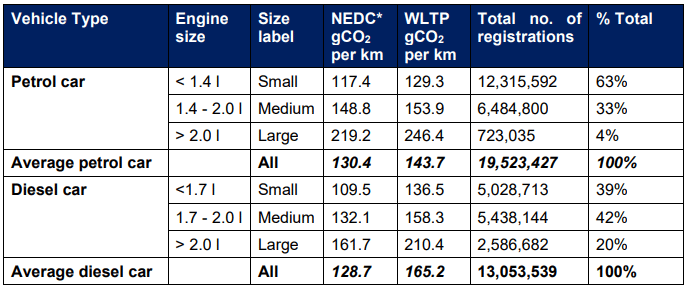
2025 DEFRA Emissions Factor Update: What It Reveals About UK Carbon Reductions
Summary
-
DEFRA’s emissions factors convert real-world activities like travel and energy use into carbon estimates — critical for accurate reporting and Net Zero strategies.
-
The 2025 update reflects improved methodologies, data revisions, and changes in operational efficiency across sectors.
-
Flights (Scope 3): Passenger and freight flight emissions dropped by up to 41% due to increased load factors post-COVID.
-
Waste to Energy (Scope 3): Emissions fell 27% following updated assumptions for Material Recovery Facilities.
-
Battery EVs & Electricity (Scope 2): BEV emissions fell 16%, and UK electricity emissions dropped 14.5%, driven by cleaner energy and improved efficiency.
-
Keeping pace with DEFRA updates is essential for businesses to ensure accurate carbon accounting and meet climate disclosure requirements.
2025 DEFRA Emissions Factor Updates: What it Reveals About UK Carbon Reductions
The conversation around environmental sustainability and reducing carbon footprints has never been more critical. One of the essential tools in this dialogue is the concept of emission factors, which play a pivotal role in assessing and managing emissions. In this blog, we’ll explore what emissions factors are, their significance and the recent changes in the UK’s emissions.
What Are Emissions Factors?
Emissions factors, also known as “conversion factors”, are numerical values used to convert quantities of one unit into another. In the context of carbon emissions, these factors translate various activities, such as energy consumption or transportation, into an equivalent amount of carbon dioxide (CO2) emissions.
Let’s say you want to calculate the emissions associated with a 3,000 km flight, travelling economy class. Conveniently for us, the Department for Environment, Food & Rural Affairs (DEFRA) has an emission factor for an average long-haul economy journey of 0.11704 kgCO₂e per passenger km. So we can simply multiply the two and work out that the footprint of your journey was 351.12 kgCO₂e.
This allows organisations and individuals to estimate the environmental impact of their actions in a standardised and comparable way.
What Are They Used For?
Emissions factors are essential for measuring and reporting greenhouse gas (GHG) emissions. They are used in carbon accounting, helping organisations understand their carbon footprint and enabling them to set and achieve reduction targets.
For example, an emission factor for electricity might reflect the average carbon intensity of the UK's energy grid, while a factor for a specific vehicle type would account for its fuel efficiency and emissions per mile. These factors are crucial for understanding the relative impact of different actions and for making informed decisions about reducing emissions.
How Are They Calculated?
Emissions factors are typically calculated by governmental or environmental bodies using comprehensive data on energy consumption, vehicle efficiency, waste processing, and other relevant metrics. In the UK, DEFRA provides annual updates to these factors based on the latest research and data. The calculations involve assessing the carbon content of fuels, the efficiency of energy use, and the emissions associated with different activities.
DEFRA Conversion Factors
DEFRA has been publishing emissions factors for UK activities annually since 2002. These factors allow organisations and individuals to calculate greenhouse GHG from a range of activities including:
- Energy Consumption
- Water Consumption
- Recycling and Disposal
- Freight and Shipping
- Travel and Commuting
Several factors can influence annual changes to these conversion factors, including changes in technology, energy mix, vehicle efficiency, and updates in methodological approaches.
The 2025 update to the UK emissions data has highlighted some significant changes in various scopes and categories. Let's explore some of the most noteworthy shifts.
Top Changes in UK Goods
Table 1: Average CO2 conversion factors and total registrations by engine size for 2008
to 2024 (based on data sourced from SMMT) gov.uk
- Scope 3, Passenger Flights: Emissions for passenger flights, both long-haul and short-haul have decreased by 41.51% and 31.23% respectively, owing to increases in load factors following the COVID-19 pandemic. Load factor refers to the percentage of available seating capacity that is filled with passengers. During the pandemic, airlines experienced lower occupancy, leading to under-utilised flights and higher emissions per passenger. As air travel has recovered, more seats are being filled on flights, resulting in a lower emissions intensity per passenger.
- Scope 3, Waste to Energy: Emissions for waste disposal via combustion (i.e., incineration with energy recovery) have decreased by 26.91%. This decrease is largely due to a change in the methodology for calculating the emissions for this factor, specifically, updated assumptions about the operational emissions of Material Recovery Facilities (MRF) which handle the pre-processing of waste before incineration. The methodological update likely reflects more accurate data on the energy efficiency of MRFs, accounting for improvements in technology and waste sorting. The UK has also made strides towards more circular waste management practices, which help reduce emissions associated with waste-to-energy processes.
- Scope 3, Freight Flights: Similarly to passenger flights, the emissions for freight flights have decreased by 18.17% due to the increase in load factors following the recovery from the COVID-19 pandemic. With more cargo being consolidated onto flights, the emissions per tonne of freight has significantly reduced. Higher load factors mean that cargo planes are more fully utilised, improving the efficiency of the flights and decreasing the overall emissions per unit of cargo.
- Scope 2, Battery Electric Vehicles: Emissions for battery electric vehicles have decreased by 15.98% following (a) a decrease in the UK electricity generation factor and (b) an increase in energy efficiency of newly registered vehicles. Advances in battery technology, motor efficiency, and vehicle design mean that newer electric cars require less energy per mile driven, contributing to a decrease in emissions per vehicle over time. This reduction is also supported by government incentives for electric vehicles, which encourage further adoption, and the ongoing infrastructure improvements in charging networks across the UK, facilitating the transition to low-carbon transport solutions.
- Scope 2, UK Electricity: Emissions for UK electricity generation have decreased by 14.51% due to less natural gas use in power stations and an increase in net imports of electricity. The UK has been gradually reducing its reliance on natural gas for electricity generation. This is part of the broader decarbonisation strategy set out in the UK's net-zero plan. A significant portion of the UK’s power generation now comes from renewable sources (such as offshore wind, solar, and hydro), alongside nuclear energy, which produces no direct emissions. The UK has also increased its imports of electricity from low-carbon sources, such as the European grid, which is more reliant on renewable energy. This helps reduce the carbon intensity of the electricity consumed within the UK, as imported electricity typically has a lower emissions factor compared to domestic fossil fuel generation.
Conclusion and Takeaways
The decreases in UK emissions across these categories are primarily driven by improvements in efficiency, increased use of renewable energy, and updated methodologies that better reflect operational practices. In the context of the UK's Net Zero ambitions, these reductions represent tangible progress toward decarbonising key sectors such as transport, waste management and electricity generation, which is essential for achieving the UK’s climate targets.
Related articles:
DEFRA GHG Emission Conversion Factors Updates 2024
Emissions in the UK: 2022 Spend-Based Analysis
Ready to simplify your carbon calculations?
Book your free call to discuss how MyCarbon can integrate DEFRA’s latest conversion factors seamlessly into your reporting and reduction strategy.

![DEFRA 2024/2025 Workbook Logo: MyCarbon - Your Sustainability Experts [Workbook] DEFRA Emissions Factors: 2024/2025 Comparisons This workbook to document the key updates to the UK Government Greenhouse Gas (GHG) Conversion Factors, published by DEFRE in June 2025. Inside you’ll find worksheets detailing key updates to the UK emissions, including explanations for the changes and their potential impacts on the UK’s path to Net-Zero. [Download Workbook]](https://www.mycarbon.co.uk/wp-content/uploads/2025/06/1-scaled.png)
